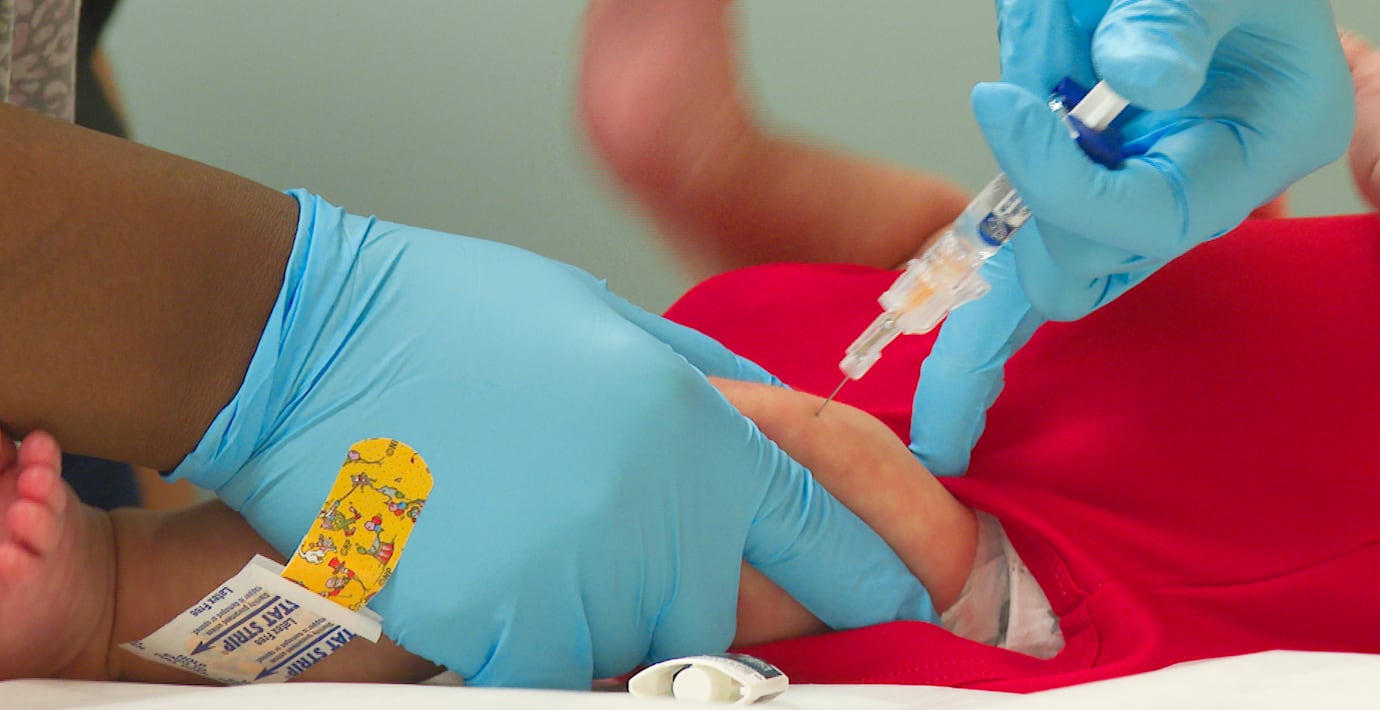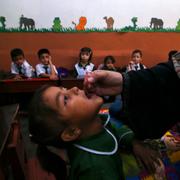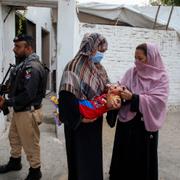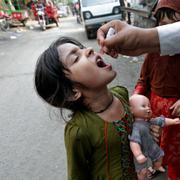
Fynd tyder på spridning av polio i nordöstra London
Spår av poliovirus har upptäckts i avloppet i nordöstra London, rapporterar Sky News. Analyser av fynden tyder på att utbrottet är begränsat till en mindre grupp i området.
Sjukdomen konstaterades utrotad i Storbritannien 2003, men enligt The Times tyder fynden på att smittan sprids igen för första gången på nästan 40 år. Landets hälsomyndighet har utfärdat en nationell varning, men lyfter samtidigt att faran för allmänheten är låg.
Ännu finns inga kända fall av sjukdomen.
bakgrund
Polio
Wikipedia (en)
Poliomyelitis, commonly shortened to polio, is an infectious disease caused by the poliovirus. In about 0.5 percent of cases, it moves from the gut to affect the central nervous system, and there is muscle weakness resulting in a flaccid paralysis. This can occur over a few hours to a few days. The weakness most often involves the legs, but may less commonly involve the muscles of the head, neck, and diaphragm. Many people fully recover. In those with muscle weakness, about 2 to 5 percent of children and 15 to 30 percent of adults die. Up to 70 percent of those infected have no symptoms. Another 25 percent of people have minor symptoms such as fever and a sore throat, and up to 5 percent have headache, neck stiffness, and pains in the arms and legs. These people are usually back to normal within one or two weeks. Years after recovery, post-polio syndrome may occur, with a slow development of muscle weakness similar to that which the person had during the initial infection.Poliovirus is usually spread from person to person through infected fecal matter entering the mouth. It may also be spread by food or water containing human feces and less commonly from infected saliva. Those who are infected may spread the disease for up to six weeks even if no symptoms are present. The disease may be diagnosed by finding the virus in the feces or detecting antibodies against it in the blood. The disease occurs naturally only in humans.The disease is preventable with the polio vaccine; however, multiple doses are required for it to be effective. The US Centers for Disease Control and Prevention recommends polio vaccination boosters for travelers and those who live in countries where the disease is endemic. Once infected, there is no specific treatment. In 2018, there were 33 cases of wild polio and 104 cases of vaccine-derived polio, and in 2019, there were 175 cases of wild polio and 364 cases of vaccine-derived polio. This is down from 350,000 wild cases in 1988. Vaccine-derived polio is a strain of the weakened poliovirus that was initially included in oral polio vaccine and that has changed over time and behaves more like the naturally occurring virus. Between 2018 and 2022, the only countries in which the World Health Organization (WHO) consistently reported cases of the wild disease were Afghanistan and Pakistan.Poliomyelitis has existed for thousands of years, with depictions of the disease in ancient art. The disease was first recognized as a distinct condition by the English physician Michael Underwood in 1789, and the virus that causes it was first identified in 1909 by the Austrian immunologist Karl Landsteiner. Major outbreaks started to occur in the late 19th century in Europe and the United States. In the 20th century, it became one of the most worrying childhood diseases in these areas. The first polio vaccine was developed in the 1950s by Jonas Salk. Soon after, Albert Sabin developed an oral vaccine, which has become the world standard.
Omni är politiskt obundna och oberoende. Vi strävar efter att ge fler perspektiv på nyheterna. Har du frågor eller synpunkter kring vår rapportering? Kontakta redaktionen



